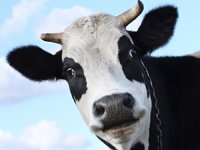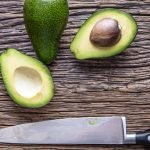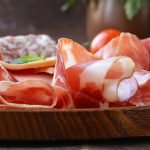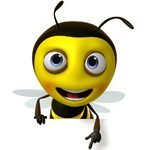First we had genetically modified tobacco. After that, a host of vegetables and fruits went GMO. It seems that scientists intend to leave no gene unturned in their quest to improve upon everything that possesses DNA. Now they’ve upped the ante, moving from the vegetable kingdom to the animal. That’s right: the latest development in GMO science is the genetically modified cow. According to a report in The Proceedings of the National Academy of Scientists, GMO cows were developed to perk up the biblical version by producing milk that’s free of allergens.1
The announcement about GMO cows comes from New Zealand, where scientists tinkered with cloned cows to create an animal that produces supposedly improved milk. Specifically, they wanted milk with reduced amounts of beta-lactoglobulin (BGL), a form of whey that ostensibly causes allergic reactions in about three out of every 100 babies. Human milk doesn’t contain BGL, which is one reason nursing babies often fare better than their bottle-fed counterparts. In other words, they wanted the genetically modified cows to produce milk more closely aligned with human mother’s milk.
But the milk from the GMO cow isn’t what comes out of Mom. For one thing, the GMO-induced milk contains twice as much casein as regular milk, which is a good thing from the commercial point of view, as casein is a thickening agent useful in producing various food products, including cheese and salad dressing.
“In terms of dairy economics, casein is the most profitable part of the milk,” says Christopher Galen of the National Milk Producers Federation.
What Mr. Galen and the research team don’t bother to mention is the fact that casein also can cause allergic reactions, including anaphylactic shock in those with extreme sensitivity.2 Several studies show links between casein and tumor production in animals.3 And then there’s the fact that casein has a narcotic-like effect on the brain, akin to the effects of morphine. There’s evidence that it causes addiction and spikes food cravings that have no real relation to hunger–particularly cravings for dairy foods. Hmmm–this might be yet another reason that, “casein is the most profitable part of the milk.”4 It certainly might explain the enthusiasm for this “new” milk evidenced by those in the dairy industry. The bottom line is that casein is the single most allergenic part of milk, so calling the new GMO milk “hypoallergenic” is more than a stretch; actually, it’s a lie. In addition, the GMO milk also contains bovine alpha-lactalbumin and bovine serum albumin — both highly allergenic.
Another thing that differentiates GMO cow’s milk from human milk is the fact that the GMO cow was force fed hormones to jump-start the process of lactation.5 In other words, the milk no doubt contains high levels of artificial hormones. The research team hasn’t finished analyzing the milk to discover what else it possesses or lacks, but no matter what the press and researchers claim, it’s already clear that it isn’t mother’s milk. And this is not the only research of its kind. Last year, scientists in China announced genetically modify cows that produce what they’re calling “human” milk.6 But again, their definition is limited to one or two characteristics that have been matched to the exclusion of dozens that have not. In the end, cow’s milk is still cow’s milk. And as Jon Barron points out, cow’s milk, at least in its non-organic, non-grass fed, pasteurized, homogenized version, may not actually be that healthy for you.
And on top of everything else, the GMO cow wasn’t quite a cow–not a normal cow, anyway. The poor thing was born without a tail. The scientists say the disfigurement is pure coincidence and has nothing to do with genetic tinkering. They aren’t concerned in the least. Says research team member Professor Keith Campbell of the University of Nottingham, “It’s very interesting and it’s another way of showing the technology can be pushed forward with potentially useful outcomes…There are zero risks in my opinion. If it was poisonous, the animal would be dead.”
By the way, cows represent just the tip of the genetically modified menagerie. Scientists have already created GMO pigs, goats, and fish. In fact, genetically modifying animals are so much a part of the agricultural landscape already that the FDA issued a publication called, “Genetically engineered animal guidelines” in January of 2009.7 Here’s an excerpt:
“For example, scientists are attempting to develop GE [genetically engineered] cattle that are resistant to bovine spongiform encephalopathy, widely referred to as “mad cow disease.” Some GE animals will grow more quickly, requiring less feed. Some GE animals have been altered to reduce their environmental impact by virtue of producing a lower level of pollutants in their wastes. Other GE animals may have improved fat composition, for example, increased levels of omega-3-fatty acids, providing a more healthful nutrient profile.”
The publication assures us that so far, GE animals aren’t in the food supply, pending further testing and approvals. You can be sure, though, that they’re coming–and soon. And if things go the way they’ve gone in the GMO-vegetable world, they won’t be labeled in any special way to indicate that they’ve had genetic tinkering — at least outside of California, depending on what happens to Prop 37 in November.8
1 Lopatto, Elizabeth. “Gene-Modified Cow Makes Hypoallergenic Milk Rich in Protein.” 1 October 2012. Bloomberg News. 5 October 2012. <http://www.sfgate.com/business/bloomberg/article/Gene-Modified-Cow-Makes-Hypoallergenic-Milk-Rich-3910085.php>
2 Stanchfield, Noel. “Side Effects of Casein.” E How.6 October 2012. <http://www.ehow.com/about_5485878_side-effects-casein-protein.html>
3 “Health Forums.” Men’s Health. <http://www.menshealth.co.uk/community/forums/thread/435930>
4 “Addicted to Cheese and Ice-Cream? The Opiate Qualities of Dairy.” 14 May 2012. Free from Harm. 6 October 2012. <http://freefromharm.org/health-nutrition/addicted-to-cheese-and-ice-cream-the-opiate-qualities-of-dairy/>
5 Gallagher, James. “GM Cows Make Low-Allergy Milk.” 2 October 2012. 5 October 2012. BBC News. <http://www.bbc.co.uk/news/health-19785006>
6 Richard Gray. “Genetically modified cows produce ‘human’ milk.” The Telegraph. 2 April 2011. (Accessed 6 Oct 2012.) <http://www.telegraph.co.uk/earth/agriculture/geneticmodification/8423536/Genetically-modified-cows-produce-human-milk.html>
7 “Genetically Engineered Animals.” FDA. 6 October 2012. <http://www.fda.gov/AnimalVeterinary/DevelopmentApprovalProcess/GeneticEngineering/
GeneticallyEngineeredAnimals/ucm113605.htm>
8 Robert Holguin. “Proposition 37: Mandatory labeling of genetically engineered food.” KABC. 5 Oct 2012. (Accessed 6 Oct 2012.) <http://abclocal.go.com/kabc/story?section=news/politics&id=8837737>











